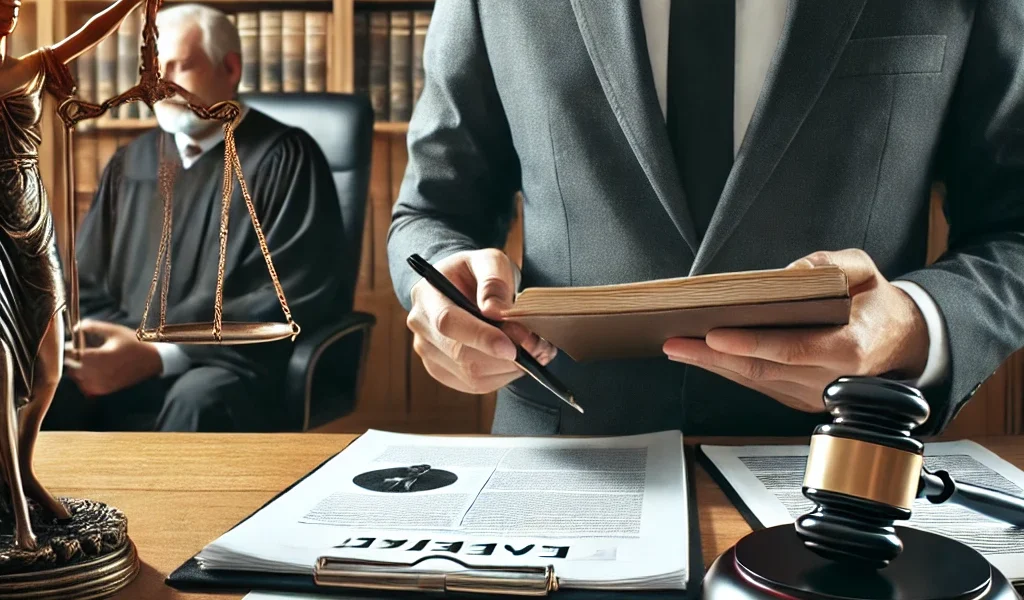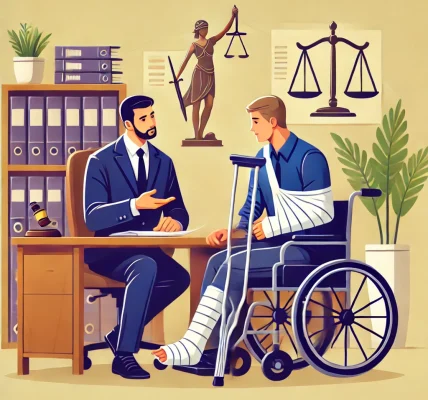When pursuing a personal injury claim, proving negligence is crucial. Negligence is a legal concept that establishes responsibility when someone’s careless actions cause harm to another person. Understanding how to prove negligence in a personal injury case can significantly impact the outcome of your claim. This guide will walk you through the essential elements of negligence, key evidence required, and strategies to strengthen your case.
Understanding Negligence in Personal Injury Law
Negligence occurs when an individual or entity fails to act with reasonable care, leading to injuries or damages to another person. In legal terms, negligence consists of four essential elements:
1. Duty of Care
The first step in proving negligence is demonstrating that the defendant owed the plaintiff a duty of care. This means that the defendant had a legal obligation to act in a reasonable manner to prevent harm.
- Examples of duty of care:
- Drivers have a duty to follow traffic laws and drive safely.
- Property owners must maintain a safe environment for visitors.
- Doctors have a duty to provide competent medical treatment to patients.
2. Breach of Duty
Once duty of care is established, the next step is proving that the defendant breached this duty. A breach occurs when a person fails to act with reasonable care, violating their responsibility.
- Examples of breach of duty:
- A driver running a red light.
- A business owner failing to clean up a spill, causing a slip-and-fall accident.
- A doctor misdiagnosing a patient due to negligence.
3. Causation
Proving causation is critical in a personal injury case. The plaintiff must show that the defendant’s breach of duty directly caused their injuries.
- There are two types of causation:
- Actual cause (cause-in-fact): The injury would not have occurred if not for the defendant’s actions.
- Proximate cause: The injury was a foreseeable consequence of the defendant’s negligence.
4. Damages
The final element of negligence is proving that the plaintiff suffered damages due to the defendant’s negligence. Damages can include:
- Medical expenses
- Lost wages
- Property damage
- Emotional distress
- Pain and suffering
Without proving damages, even if negligence is evident, the plaintiff may not be entitled to compensation.
Evidence Needed to Prove Negligence
To build a strong personal injury case, you need substantial evidence to support your claim. The following types of evidence are commonly used:
1. Medical Records
Medical records provide documentation of injuries sustained due to the defendant’s actions. They serve as crucial evidence to establish the extent of harm.
2. Witness Statements
Eyewitnesses can provide valuable testimony about how the incident occurred. Statements from bystanders, passengers, or employees can support your version of events.
3. Surveillance Footage or Photos
Photos and videos of the accident scene can help illustrate hazardous conditions or reckless behavior.
4. Police Reports
If law enforcement was involved, an official police report can provide an unbiased account of the incident.
5. Expert Testimony
In some cases, expert witnesses such as medical professionals, accident reconstruction specialists, or engineers may provide insight into the case.
Steps to Strengthen Your Negligence Claim
To improve your chances of a successful personal injury claim, follow these key steps:
1. Seek Immediate Medical Attention
Even if injuries seem minor, getting medical help immediately ensures proper documentation.
2. Collect and Preserve Evidence
Take photos, gather witness contact information, and secure any available video footage.
3. Avoid Making Statements to Insurance Companies
Insurance adjusters may use your statements against you. It’s best to consult a lawyer before discussing the case.
4. Hire an Experienced Personal Injury Lawyer
A qualified attorney can help navigate the legal complexities, negotiate settlements, and represent you in court if necessary.
Common Defenses Against Negligence Claims
Defendants in personal injury cases often use several defenses to challenge a negligence claim, such as:
- Comparative negligence: Arguing that the plaintiff was also responsible for their injuries.
- Assumption of risk: Claiming that the plaintiff knowingly took part in a risky activity.
- Lack of causation: Asserting that the injury was due to another factor, not the defendant’s actions.
Conclusion
Proving negligence in a personal injury case requires a thorough understanding of legal principles, strong evidence, and strategic legal representation. By establishing duty of care, breach, causation, and damages, you can strengthen your claim and seek fair compensation for your losses. If you’ve been injured due to someone else’s negligence, consider consulting a personal injury lawyer to guide you through the legal process.
By following these steps and gathering the right evidence, you can improve your chances of a favorable outcome in your personal injury case.




